The Himalayas, curving across the northern part of Nepal, are a towering mountain range with more than 50 peaks exceeding 23,600 feet in elevation. They’re constantly growing as the Indian tectonic plate pushes into the Asian plate — adding another centimeter per year and causing the occasional earthquake.
Trekkers and mountaineers flock to Nepal to test their abilities, often trying to summit Mount Everest, the tallest peak in the world. In 2019, tourists spent an average of $50 per day during their excursions in Nepal — a lot of money in Nepalese currency.
Prior to the COVID-19 pandemic, tourism brought in more than $2 billion to Nepal and employed a million people. Over the past decade, this increased revenue and employment helped the nation pursue the U.N.’s sustainable development goals, including education, gender equality and economic opportunity. The government even announced a “Visit Nepal 2020” campaign, intending to attract even more tourists and create more jobs.
Tourism Comes to a Standstill
However, when the pandemic hit, the nation’s growth flatlined. Not only has the country lost billions of dollars in revenue, it has also set the country back in terms of the sustainable development goals. People who were already teetering on the edge of poverty lost their income. Millions faced food insecurity as supply routes were shut down. Once-crowded hiking trails are empty; popular hotels and tea houses stand vacant, with boarded-up windows.
Bimal “Happy” Dahal founded Happyland Treks in 2017 when Nepal’s tourism industry was growing at an explosive pace. He enjoyed bringing people from across the globe to Nepal’s most beautiful areas and exposing them to the vibrant local culture. In turn, he’s met people from dozens of countries and speaks near-fluent English.
“Trekking gives me an opportunity to learn a lot of different things, and talk to people about their families, villages and countries,” Happy said. “It gives me both friendship and money.”
 Happy had started working in the trekking business right after leaving school and quickly found success. Even right before lockdown, he had just completed a five-day trek and Happy acknowledges how lucky he was to have a steady source of income. Now, millions of people in Nepal — including those in the trekking industry — are searching for work.
Happy had started working in the trekking business right after leaving school and quickly found success. Even right before lockdown, he had just completed a five-day trek and Happy acknowledges how lucky he was to have a steady source of income. Now, millions of people in Nepal — including those in the trekking industry — are searching for work.
“We were thinking that lockdown was going to last one week,” Happy says, remembering the early days of the pandemic. “No one was expecting it to last this long.”
Kathmandu’s Mass Exodus
As the nation’s primary industry took a hit, many young people left Kathmandu for the countryside. Happy explains they’re making the best of a tough situation: leaving the city to plant barley or graze livestock to earn a meager living until tourism rebounds. He describes villages full of young people without much to do except wait. In fact, Happy purchased a bike and has been riding it around Kathmandu to pass the spare time.
The only similar situation in recent memory is 2015’s Gorkha Earthquake, which had killed more than 9,000 people and sent the nation’s economy in a tailspin. When asked which is worse, the Gorkha Earthquake or the pandemic, Happy predicts COVID-19 will have a longer and more severe impact on the country.
“The pandemic is harder because the country is isolated,” Happy says. Severe travel restrictions have made it difficult for international aid groups to get to Nepal to offer help or distribute supplies.
A Hopeful Outlook
Fortunately, COVID cases have begun to drop in Nepal after the pandemic’s devastating peak in April and May, 2021. The country has begun a slow re-opening process, permitting a limited number of international flights with travelers who are vaccinated or provide a negative PCR report. Upon arrival, visitors are required to spend 10 days in quarantine at government-listed hotels.
 “I’m sure people will come back to Nepal,” Happy says, radiating positivity — it’s clear how he’s earned his nickname. “Nepal is a very affordable place to visit, where people can spend a little money and see a lot of culture. Trekking is a great way to learn about my country.”
“I’m sure people will come back to Nepal,” Happy says, radiating positivity — it’s clear how he’s earned his nickname. “Nepal is a very affordable place to visit, where people can spend a little money and see a lot of culture. Trekking is a great way to learn about my country.”
As the world stabilizes, vaccination rates increase and travel becomes possible, the Himalayas — with their breathtaking peaks, verdant valleys and crystal-clear lakes — await explorers seeking enchanting beauty and endless adventures. The millions of Nepali people reliant on the tourism industry are eager to welcome foreign tourists to Nepal once again, especially after more than 18 months without income. Trekking businesses, like Happyland Treks, are taking all precautions necessary to provide a safe and culturally rich experience.


